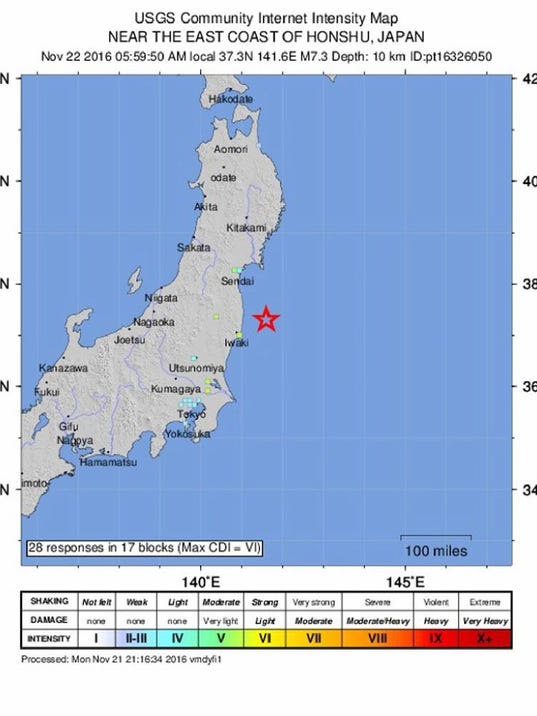Archive for the ‘Nuclear-Radiation-Contamination’ Category
At 4 a.m. on March 28, 1979, the worst accident in the history of the U.S. nuclear power industry begins when a pressure valve in the Unit-2 reactor at Three Mile Island fails to close.
Tuesday, March 28th, 2017Signs of life are returning nearly six years after panicked residents fled radiation spewed by the nearby Fukushima Daiichi nuclear power plant, when it was struck by an earthquake and tsunami.
Friday, March 10th, 2017“….only several hundred of the original 21,500 residents plan to return in the first wave…”
DARPA Deploys 1,000 Detectors at the National Mall as part of an exercise designed to help track radioactive material threats in urban areas.
Tuesday, November 15th, 2016- “…Hundreds of volunteers participated in the program and wielded a backpack that contained radiation detectors while walking around the urban area as they attempted to locate an “abducted physicist” as part of the simulation….”
October: National Preparedness Month: Radiation Emergencies
Monday, October 3rd, 2016National Preparedness Month: Radiation Emergencies
Centers for Disease Control and Prevention (CDC) sent this bulletin at 09/30/2016 02:18 PM EDT
National Preparedness Month: Radiation Emergencies
Protect Yourself and Your Family in a Radiation Emergency
Get Inside. Stay Inside. Stay Tuned.

In support of National Preparedness Month in September, CDC’s Radiation Studies Branch (RSB) is highlighting information on the Radiation Emergencies website to help the public, public health, and medical communities prepare for a radiation emergency.
The focus for this month is Radiation Emergencies: Protect Yourself, Your Family and Your Community. A different topic is highlighted throughout the month:
- Preparedness Starts in Your Community–Talk with your family and friends about what to do in a radiation emergency.
- Community Preparedness is the Key to Your Health and Safety—Preparedness starts at home, in your community, workplaces and schools. Ask questions about sheltering in place and other actions you can take in a radiation emergency.
- Protect Yourself, Your Family and Your Community—Work together with community members to promote awareness of available resources for radiation emergencies.
Be Prepared for a Radiation Emergency
What can you do before a radiation emergency happens so that you are prepared? At home, put together an emergency kit that would be appropriate for any emergency. A battery-powered or hand crank emergency radio, preferably a National Oceanic and Atmospheric Administration (NOAA) weather radio is important to have for any emergency situation.
Check with your community leaders, child’s school, the nursing home of a family member, and your employer to see what their plans are for dealing with a radiation emergency.
A blast at a power plant in central China killed at least 21 people and injured five on Thursday
Friday, August 12th, 2016Aug. 9, 1945: The United States, during WWII, exploded a nuclear device over Nagasaki, Japan, instantly killing an estimated 39,000 people.
Tuesday, August 9th, 2016“…Discussions about nuclear terrorism also tend to focus on the risk of terrorists stealing weapons-grade material or making a dirty bomb. But they often overlook the danger of terrorists attacking a nuclear plant in order to set off a Chernobyl- or Fukushima-like disaster. That risk is real, however, and has been known for a while. …”
Wednesday, April 6th, 2016“….Striking a nuclear plant or the cooling ponds in which nuclear waste is stored wouldn’t set off a mushroom cloud or kill hundreds of thousands of people. But it would spew large amounts of radiation, spark a mass panic and render vast swaths of land uninhabitable. And it could cause thousands of early deaths from cancer….”
** World leaders are concerned that jihadists want to buy basic drones that are widely available online to transport radioactive material into the heart of major cities in a strike that could kill thousands.
Sunday, April 3rd, 2016“….Isil is believed to have seized around 90 pounds of low grade uranium from Mosul University in Iraq after taking over the city in 2014, though its limited toxicity means its use would likely cause panic than serious harm. ….”
March 28, 1979: The worst accident in the history of the U.S. nuclear power industry begins when a pressure valve in the Unit-2 reactor at Three Mile Island fails to close.
Monday, March 28th, 2016https://www.youtube.com/watch?v=4Qwg4oERhvw
** The core eventually heated to over 4,000 degrees, just 1,000 degrees short of meltdown.


